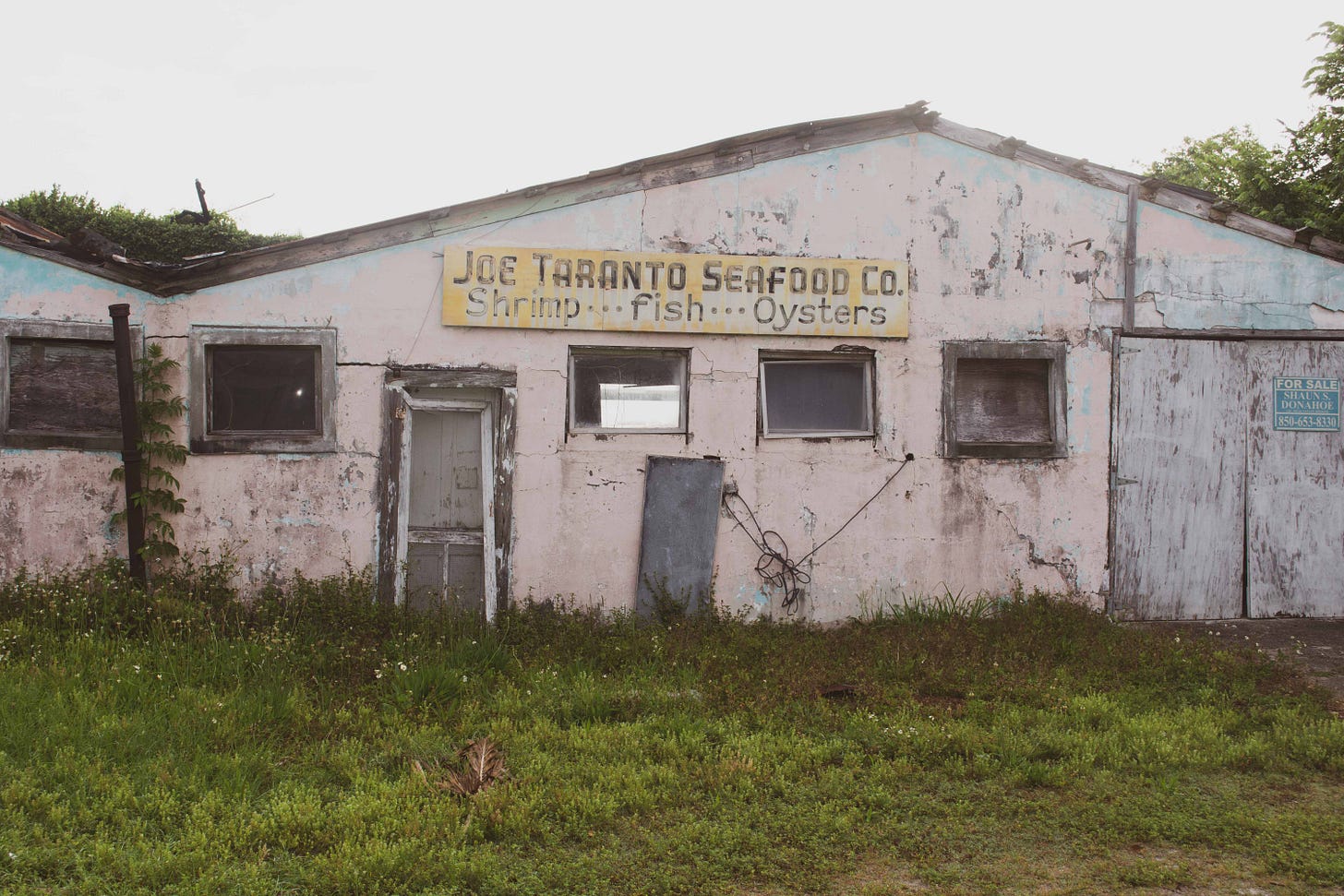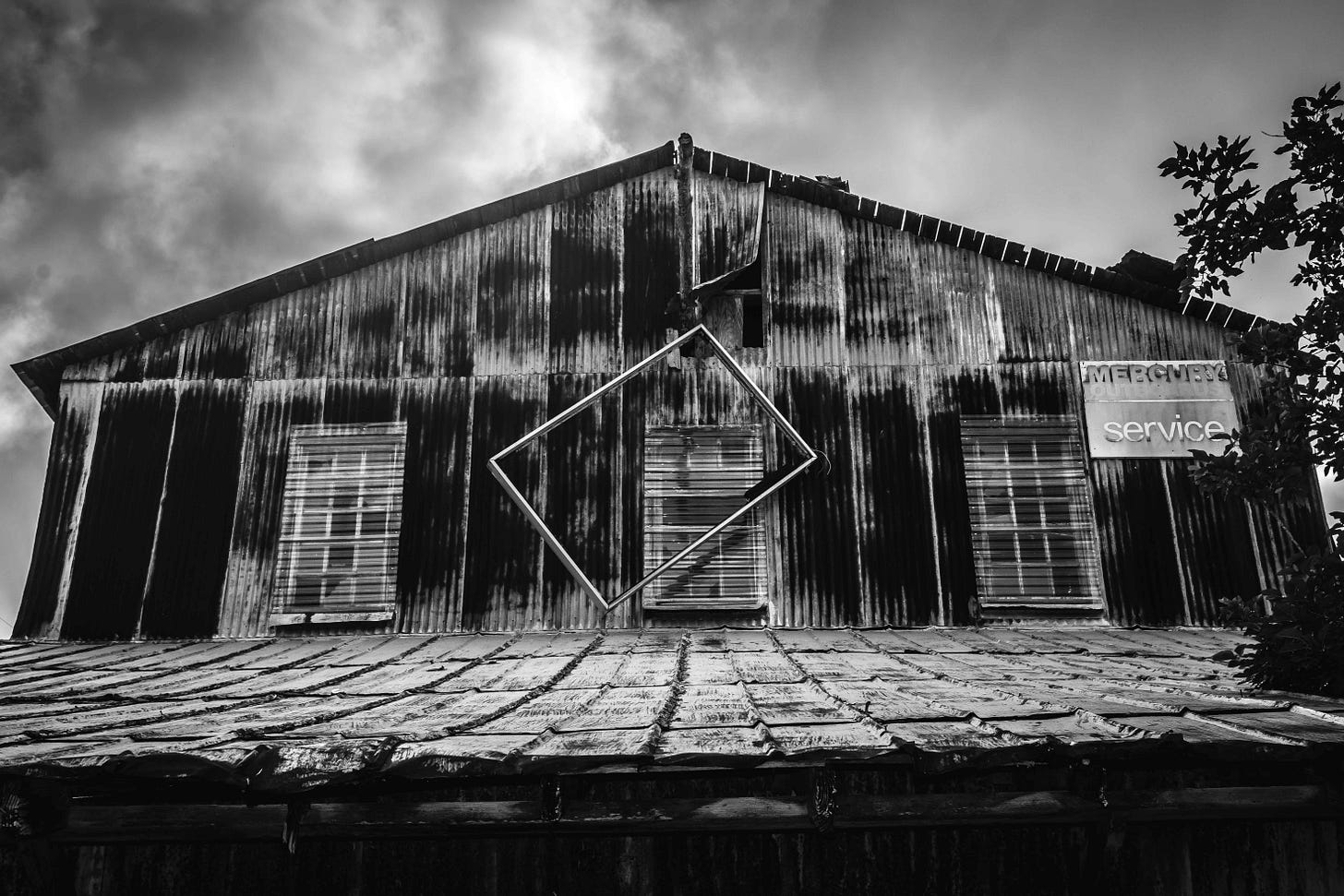Apalachicola
Florida's last real fishing village
About
If you are looking for an authentic, working fishing village in Florida, you have to go to Apalachicola. This quaint little town (population 1100) has a rich history and its proximity to the Gulf of Mexico and the Apalachicola River make it a great place for the seafood industry. It is a hard place to get to, but that adds to the mystique of the town.
Early History
From www.cityofapalachicola.com:
“Apalachicola is one of the most historic cities in Florida. Located where the Apalachicola River meets Apalachicola Bay, the name “Apalachicola” is an Indian word interpreted as a ridge of earth produced by sweeping the ground in preparation for a council or peace fire. Over time, the term has been translated as an area of peaceful people or people on the other side. “Land of the friendly people” is a common interpretation of the word.
But even before the city was founded, the area surrounding Apalachicola was an important center of history. Remnants of native American cultures date back to the middle Archaic period (2000 BCE) and documentation exists that claims native cultures have lived here during the intervening Woodland and Mississippian periods. Archaeologists estimate that the population could have reached 40,000, attracted to the area due to stable water supplies and abundant game. Middens left by these settlers are composed primarily of clam and oyster shells. Some of the larger middens were used as burial sites.
Europeans first explored Franklin County in the early 1500s as Panfildo de Narvaez visited a location near present-day Apalachicola. The journal of his expedition describes a coastal island that is believed to be Dog Island, St. Vincent Island or St. George Island. The earliest-known European settlement of the area was a fort built at the mouth of the Apalachicola River by the Spanish in 1705 where it remained under Spanish ownership until it was ceded to England in 1763.
In 1783 the area returned to Spanish control after the Second Treaty of Paris, which ended the Revolutionary War. Some British trading companies, including Panton, Leslie, and Company were allowed to remain. In 1811, the trading company John Forbes and Company persuaded Spain and the Indians to cede 1.5 million acres between the Apalachicola and St. Marks Rivers to their firm because of large debts owed to their trading company by trader Indians. The transfer became known as the Forbes Purchase.”
Industry
Apalachicola has seen several industries come and sometime go, over the years.
Timber Industry
“Apalachicola’s timber industry emerged prior to the Civil War alongside a booming cotton shipping trade. One of the town’s first sawmills, the Pennsylvania Tie Company, was located at a site known today as the “Mill Pond” or Scipio Creek Boat Basin on North Market Street. The sawmill cut railroad cross ties from cypress logs that had been dragged from the swamps surrounding the Apalachicola River.
Despite an abundance of timber, early efforts to expand the industry were thwarted by high transportation costs, under-capitalization and the ever-present industry hazard of fire. It wasn’t until James N. Coombs came to Apalachicola in the late 1870s when, backed by Northern capital, Coombs went on to establish and manage several sawmills in the county. Other mills followed including the Cypress Lumber Company, Franklin County Lumber Company and Kimball Lumber Company.
Spurred on by a worldwide demand for timber products, sawmills soon sprang up along the river, and millions of board feet of pine and cypress passed through the port of Apalachicola. Pines were also sought for their sap, which was distilled into turpentine and resin and known collectively as naval stores
Apalachicola’s timber industry flourished until the mid 1920s, declining, in part due to dwindling virgin timber stands and a declining naval stores industry.”
Apalachicola Railroad Era
Apalachicola’s first railroad engine steamed into town on April 30, 1907 amid a town-wide celebration. The Apalachicola Northern Railroad (ANR) tracks entered town at the north end of Market Street and ran parallel along Water Street to its terminus at the Railroad Depot located near Commerce Street and Avenue G. A spur of the rail line extended to the south end of Water Street to load seafood from the packing houses on the river.
The emergence of railroads to North Florida in the mid 1830s was propelled, in part, by a need for more reliable shipping alternatives. Steamboats ruled the river during the early to mid 1800s but were not always reliable, hindered constantly by unpredictable river levels, snags and mechanical problems.
The first efforts to establish rail travel to the area began many years before the effort was successful. In 1885, a group of Apalachicola businessmen secured a charter for the Apalachicola and Alabama Railroad Company. The group hoped to build a rail line northward to connect to the Pensacola and Atlantic Railroad network in Jackson County. Unable to secure financial backing for the endeavor, the rail plan was abandoned until 1903, when North Florida businessman Charles B. Duff and partners chartered the Apalachicola Northern Railroad (ANR). Construction began in 1905 and trains began running north from Apalachicola in 1907. From Apalachicola, the ANR route ran north of Apalachicola to Chattahoochee where an interchange was made with the Atlantic coast Line. An extension to Port St. Joe was completed in 1910.
“Rail commerce flourished in the area until the timber resources started to dwindle in the 1920s. In 1933, the railroad was purchased by Alred I. duPont to service the St. Joe Paper Company mill in Port St. Joe which operated there from 1936 to 1996.”
Apalachicola’s Early Seafood Industry
Apalachicola has been a fishing village for many years. The seafood industry in Apalachicola is as important today as it was more than 175 years ago. It is the seafood industry that has most significantly shaped the culture and maritime heritage of Apalachicola and it is the seafood industry that anchors a growing nature-based tourism industry throughout the region.
“Oysters were Apalachicola’s first seafood industry. Oysters were sold locally as early as 1836, harvested much the same as they are today with scissor-shaped tongs hoisted aboard shallow-draft skiffs. By 1850, oysters had begun to be packed in barrels and shipped aboard steamers headed north or to other neighboring states.”
Sponge Industry
“From the mid-1870’s to the early decades of the twentieth century, Apalachicola was part of Florida’s sponge industry. The local sponge trade came to rank third in the state. By 1895, over 100 men made their living locally in the short-lived but profitable Apalachicola sponge industry. In 1879, Apalachicola had 16 sponge vessels. The larger vessels would put out to sea for four weeks or more and carried several dinghies or small rowboats. The sponges were taken by “hooking.” The hooker sat in the bow and scanned the water for sponges.
The oarsman than moved the boat into position, and the hooker used a long pole with a sharp-pronged tool on the end to bring up the sponges. Once the larger vessel had a full cargo it returned to port. The three principal buyers of sponges were M. Brash, Sr., John G. Ruge, and Joseph Messina. The buyers inspected the catch and made sealed bids. The sponges were later shipped to San Francisco, St. Louis, Baltimore, and New York.
By 1895, between 80 and 120 men were employed in it, and the city had two sponge warehouses. Later, as the major Greek sponge operations moved down the coast to Carrabelle, Cedar Key and Tarpon Springs, shrimp and sponge operations continued in Apalachicola with the Greek sailing fleet. Today, there are two original sponge warehouses remaining in Apalachicola’s historic downtown district. The Sponge Exchange, built in 1840, is one of the original sponge warehouses.”
Wonder what’s in this old safe?
Today
Today, Apalachicola is alive and well, and has recovered from Covid close-downs, recent hurricanes, and the closing of the oyster fishery. It is still very much a fishing village. Shrimp boats dock downtown on the waterfront daily. Stores and galleries and restaurants and bars are open for business. The seafood industry is still going strong, with fresh gulf shrimp and fish in high demand. Tourism is a big part of the economy now. Nearby St. George Island is a popular beach, especially for families. https://www.floridasforgottencoast.com/st-george-island/
If You Go
Apalachicola is a great town to visit for a few days. You have to try the local brew from Oyster City Brewing Company
https://oysterhttps://oystercity.beer/city.beer/
Lots of great choices!
On our last trip, we stayed at an airbnb right in town, a block off of Water Street. Find yours here:
There are several other places we have stayed in Apalachicola. The Gibson Inn is an historic hotel and is undergoing major renovations. It looks great!
Also, the Water Street Hotel and Marina has beautiful suites overlooking the river.
http://www.waterstreethotel.com/
There are several good restaurants in the downtown area. For breakfast, lunch or dinner, try
. The Owl Cafe and The Taproom adjoining the Owl are local favorites
. Local seafood is cooked fresh at Hole in the Wall Raw Bar.





